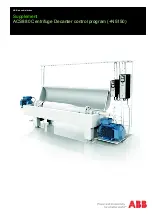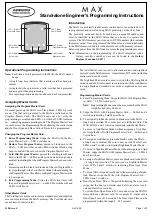Rx Sampling Clock
[(OSR+1) × Baud Rate]
Baud Rate =
Modulo Divide By
(1 through 8191)
LPUART ASYNCH
Module Clock
LPUART ASYNCH Module Clock
Divide By
(OSR+1)
OSR
SBR[12:0]
Baud Rate Generator
Off If [SBR12:SBR0] =0
SBR[12:0] × (OSR+1)
Tx Baud Rate
Figure 46-3. LPUART baud rate generation
Baud rate generation is subject to two sources of error:
• Integer division of the asynchronous LPUART baud clock may not give the exact
target frequency.
• Synchronization with the asynchronous LPUART baud clock can cause phase shift.
46.4.2 Transmitter functional description
This section describes the overall block diagram for the LPUART transmitter, as well as
specialized functions for sending break and idle characters.
The transmitter output (TXD) idle state defaults to logic high, CTRL[TXINV] is cleared
following reset. The transmitter output is inverted by setting CTRL[TXINV]. The
transmitter is enabled by setting the CTRL[TE] bit. This queues a preamble character that
is one full character frame of the idle state. The transmitter then remains idle until data is
available in the transmit data buffer. Programs store data into the transmit data buffer by
writing to the LPUART data register.
The central element of the LPUART transmitter is the transmit shift register that is 9-bit
to 13 bits long depending on the setting in the CTRL[M], CTRL[M7], BAUD[M10] and
BAUD[SBNS] control bits. For the remainder of this section, assume CTRL[M],
CTRL[M7], BAUD[M10] and BAUD[SBNS] are cleared, selecting the normal 8-bit data
mode. In 8-bit data mode, the shift register holds a start bit, eight data bits, and a stop bit.
When the transmit shift register is available for a new character, the value waiting in the
transmit data register is transferred to the shift register, synchronized with the baud rate
clock, and the transmit data register empty (STAT[TDRE]) status flag is set to indicate
another character may be written to the transmit data buffer at LPUART_DATA.
If no new character is waiting in the transmit data buffer after a stop bit is shifted out the
TXD pin, the transmitter sets the transmit complete flag and enters an idle mode, with
TXD high, waiting for more characters to transmit.
Functional description
Kinetis KE1xZ256 Sub-Family Reference Manual, Rev. 3, 07/2018
1206
NXP Semiconductors
Summary of Contents for Kinetis KE1xZ256
Page 2: ...Kinetis KE1xZ256 Sub Family Reference Manual Rev 3 07 2018 2 NXP Semiconductors...
Page 178: ...Usage Guide Kinetis KE1xZ256 Sub Family Reference Manual Rev 3 07 2018 178 NXP Semiconductors...
Page 356: ...Usage Guide Kinetis KE1xZ256 Sub Family Reference Manual Rev 3 07 2018 356 NXP Semiconductors...
Page 410: ...Interrupts Kinetis KE1xZ256 Sub Family Reference Manual Rev 3 07 2018 410 NXP Semiconductors...
Page 604: ...Usage Guide Kinetis KE1xZ256 Sub Family Reference Manual Rev 3 07 2018 604 NXP Semiconductors...
Page 634: ...Usage Guide Kinetis KE1xZ256 Sub Family Reference Manual Rev 3 07 2018 634 NXP Semiconductors...
Page 674: ...Usage Guide Kinetis KE1xZ256 Sub Family Reference Manual Rev 3 07 2018 674 NXP Semiconductors...
Page 820: ...Usage Guide Kinetis KE1xZ256 Sub Family Reference Manual Rev 3 07 2018 820 NXP Semiconductors...
Page 1030: ...Usage Guide Kinetis KE1xZ256 Sub Family Reference Manual Rev 3 07 2018 1030 NXP Semiconductors...
Page 1052: ...Usage Guide Kinetis KE1xZ256 Sub Family Reference Manual Rev 3 07 2018 1052 NXP Semiconductors...
Page 1066: ...Usage Guide Kinetis KE1xZ256 Sub Family Reference Manual Rev 3 07 2018 1066 NXP Semiconductors...
Page 1268: ...Usage Guide Kinetis KE1xZ256 Sub Family Reference Manual Rev 3 07 2018 1268 NXP Semiconductors...
Page 1314: ...Usage Guide Kinetis KE1xZ256 Sub Family Reference Manual Rev 3 07 2018 1314 NXP Semiconductors...
Page 1316: ...Kinetis KE1xZ256 Sub Family Reference Manual Rev 3 07 2018 1316 NXP Semiconductors...


















